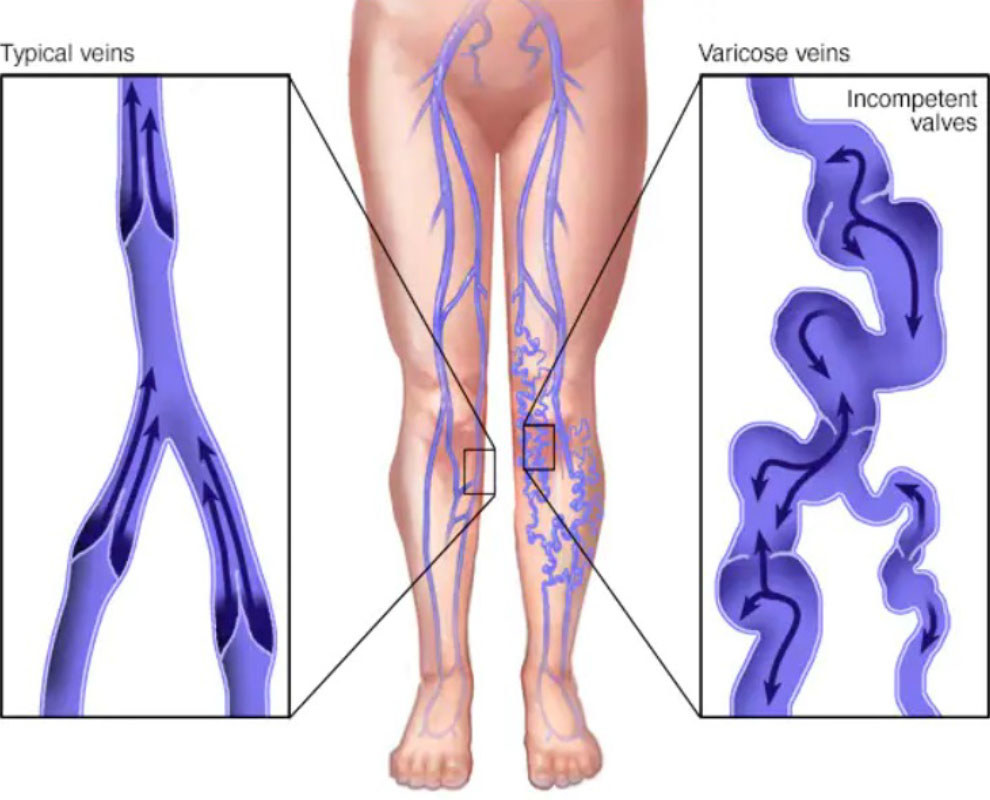Varicose veins are twisted, enlarged veins. Any vein that is close to the skin's surface (superficial) can become varicosed. Varicose veins most commonly affect the veins in the legs. That's because standing and walking increase the pressure in the veins of the lower body.
For many people, varicose veins and spider veins — a common, mild variation of varicose veins — are simply a cosmetic concern. For other people, varicose veins can cause aching pain and discomfort. Sometimes varicose veins lead to more serious problems.

How do you treat varicose veins?
Treatment for varicose veins involves closing off, destroying or removing varicose veins – swollen, lumpy veins that develop due to weak valves in your blood vessels. As the valves in the veins which normally stop blood flowing backwards in the legs get weaker, the blood starts to accumulate and the veins become lumpy. Varicose veins can be small or large, but normally superficial. Although treatment is not always necessary, they can be painful and lead to complications such as leg ulcers.
It may be suggested that you need varicose vein removal if your legs:
- Ache or are painful
- Develop leg ulcers
- Have varicose eczema – dry, flaky, itchy and discoloured skin over your veins
- Bleed easily when knocked
- Are swollen
- Have a poor cosmetic appearance
Compression stockings can also help relieve the pain, discomfort and swelling in your legs caused by varicose veins.However, they are not proven to help stop your varicose veins worsening or prevent new varicose veins appearing. You will have your veins examined and will be asked about your symptoms.
What investigation is necessary for my surgery?
You may be sent for an ultrasound duplex scan to help locate damaged valves and check your deeper veins are working.
Before treatment, you may be recommended too:
- Wear compression stockings to improve circulation
- Avoid standing for long periods
- Exercise – such as swimming or walking
- Maintain a healthy weight
- Put your feet up when resting
What does the surgery entail?
The varicose vein is closed off and destroyed or removed, and your blood flow will naturally re-route through your other healthy veins. Treatment methods include:
This procedure uses radiofrequency energy to heat the vein walls, sealing them and destroying the vein. Most commonly this procedure is done under regional anaesthetic.
Benefits of this treatment compared to alternatives include a faster procedure, less pain and less bruising. After your treatment, a dressing will be applied over the insertion site, you may have pins and needles in your legs and you might have to wear compression stockings for up to a week.
Varicose vein surgery: Ligation and stripping
This is open surgery and a more invasive procedure. This surgery involves tying off the vein and then stripping it out. You will be under general anaesthetic for this.
Will my veins come back?
Unfortunately, there is still a chance your veins can reoccur with time. There is no evidence to suggest one technique is superior with regards to reoccurrence.
Contact us
Should you wish to consult Mr Lingam about your varicose veins please send an email to mklingam.sec@gmail.com or call:
Derby Nuffield on 01332 540100
Derby Private Suite on 01332 786128
Mr Lingam consults at the Derby Nuffield on Tuesday AM, Wednesday and Friday PM and at Derby Private Suite on a Thursday PM.
